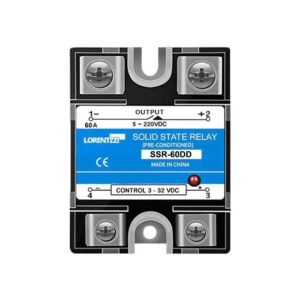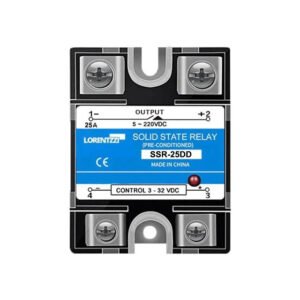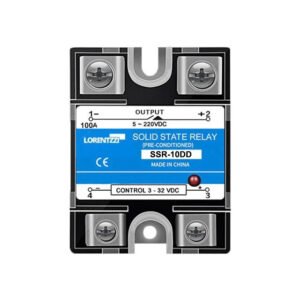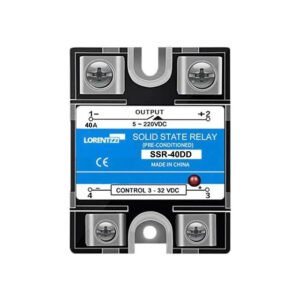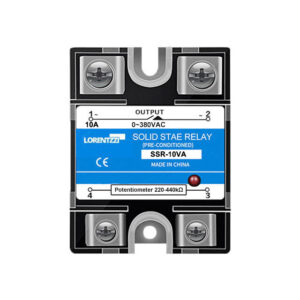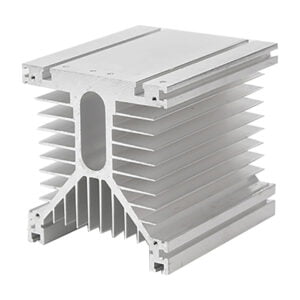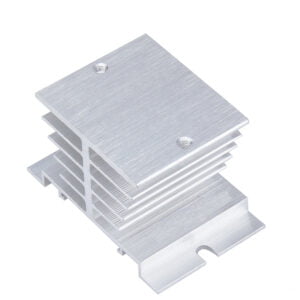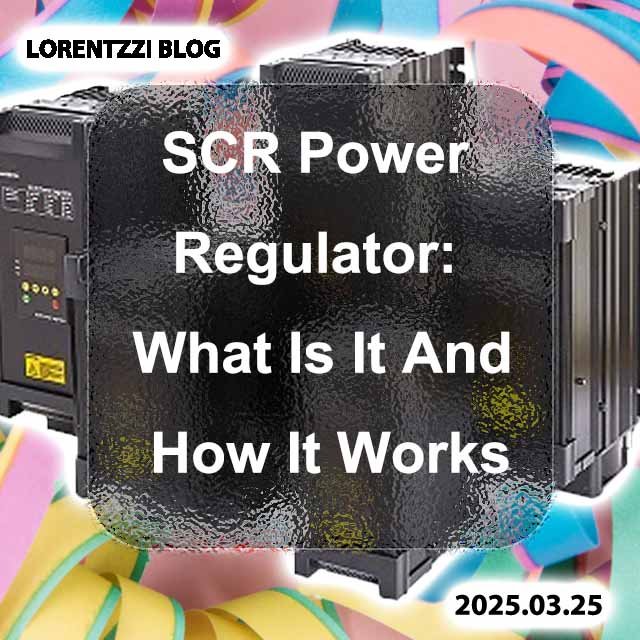Solid-state relays, or SSRs for short, are used as actuators and are widely used in many applications such as temperature control systems, lighting control systems, etc. But do you know how many types there are and how to use them correctly? In this blog, you will get all the knowledge you want.
By load part difference
According to load part differences, solid state relays can be divided into AC solid state relays and DC solid state relays, but what are they?
AC solid state relays
AC solid state relays are specially designed for AC loads. For example, in the temperature control system, we often use it together with the PID temperature controller to control the AC heater. The AC solid state relay consists of three key components, an optocoupler, a triac, and a snubber circuit.
AC solid-state relays can be further divided into DC controlled and AC controlled types. DC to AC SSRs use a DC input of 3-32 V to control AC loads, while AC to AC SSRs employ an AC input of 70-280 V for the same purpose.
Additionally, AC solid-state relays can be divided into single-phase and three-phase types. The single-phase type is typically used to control two-wire loads, which generally have lower power ratings. In contrast, if higher power is required, a three-phase AC solid-state relay is a better choice. According to the related formula, under the same voltage and current conditions, three-phase electricity can generate approximately 1.732 times more power than single-phase electricity.
DC solid state relays
Conversely, DC solid-state relays are primarily utilized for DC loads such as DC heaters, DC motors, and DC lamps. Their main components include an optocoupler, a MOSFET or transistor, and a snubber circuit.
Unlike AC solid state relays, this type of SSR can only use DC3-32V to turn on or off DC loads.
By switching mode
If classified by the switching mode, solid-state relays can be divided into zero-cross types, random conduction types and analog types.
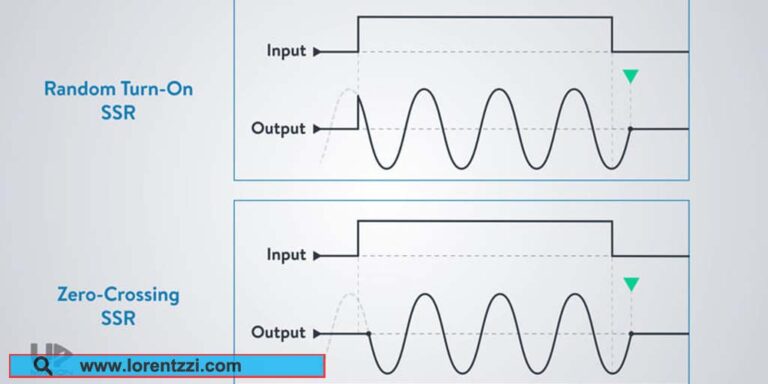
Zero-crossing solid state relays
Zero-crossing means that once the control signal is added to the control part, the load will not start immediately, but wait until the voltage passes through zero at the next moment. This gives SSR the advantages of reducing electrical noise and reducing inrush current and voltage to heating elements.
Random conduction solid state relays
Random conduction working principle is that once the control signal is applied to the solid state relay control terminals, it will turn on the load without delay, this is very good for inductive loads like motors and solenoids.
Analog solid state relays
The analog SSRs are also called proportional SSRs, it uses potentiometer or 4-20 mA analog signal to control the load, with the potentiometer resistance increase or 4-20 mA increase, the output voltage will be increased or decreased as well.
By mounting methods
From another perspective, for example, mounting methods, solid state relays can be categorized into panel mounting types, DIN rail mounting types, PCB mounting types and plug-in types.
Panel-mount SSRs
Panel-mounting SSRs are a common and widely used installation method. The installation relies on screws and screwdrivers. Before installing, you should make sure the holes are drilled, and the hole size should match the size of the SSR installation holes. Generally speaking, all panel-mounting SSR installation holes are M4 size.
DIN rail-mount SSRs
DIN rail mounted solid state relays have the advantages of simple and quick installation. The product itself is pre-installed with DIN rail clips, so customers can directly install it on the standard 35 mm DIN rail together with other components in the distribution box (such as MCCB, MCB, fast fuse, etc.), which greatly saves installation time and improves the aesthetics after installation.
PCB-mount SSRs
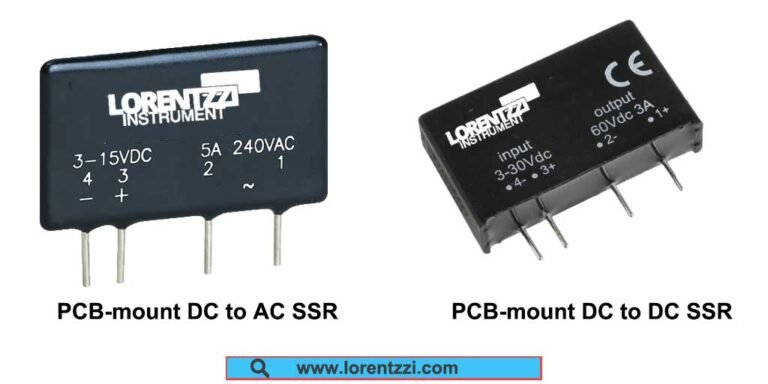
PCB mount SSR is designed for assembly on PCB. It is usually small in size and has a low current of less than 10 amps. It is installed in a pin-type manner with 4 pins reserved.
Plug-in Solid state relays

Plug-in solid state relays are a not so commonly used product, they are originally designed to replace magnetic relay in some applications, such as in explosive gas stations, oil fields, flavor production factories etc. Plug-in SSRs have advantages like being convenient to plug and unplug, strong anti-vibration etc.
By load capacity
Different load capacities solid state relays are called different names, if the load current is less than 120 amps, they don’t have special names, always called solid state relays. If above 120 amps, the solid state relay is often called industrial solid state relays, we will explain the industrial SSRs specially in the below section.
Industrial SSRs
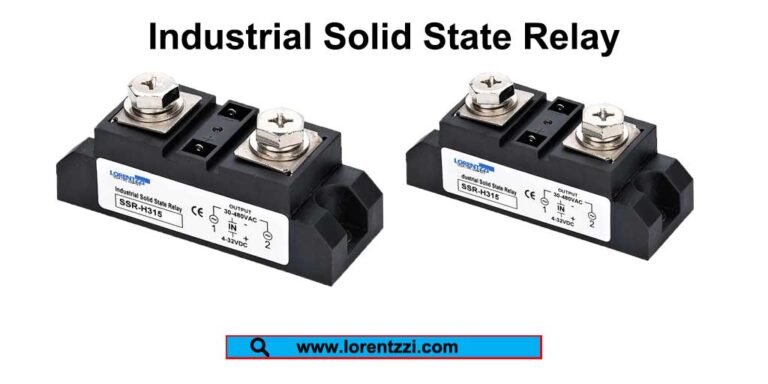
Industrial grade solid state relays are designed for heavy loads such as heating elements rated at around 200 amps, 300 amps, 500 amps or even higher. If you plan on using this type of solid state relay, make sure you mount them on a suitable heat sink for passive cooling and add cooling fans for active cooling.
Now that we have listed all the solid state relay types, if you want to learn how to install the solid state relay, please refer to our article: Solid State Relay Tutorial: 6 Essential Installation Tips For Optimal Performance.
Conclusion
Different types of solid state relays have their own advantages and disadvantages, if you want to get our professional advice on choosing the types, please send your questions to shonxu@lorentzzi.com.
At Lorentzzi®, we offer a wide range of high-quality solid state relays. We believe in the business philosophy of “one order, one friend”.






